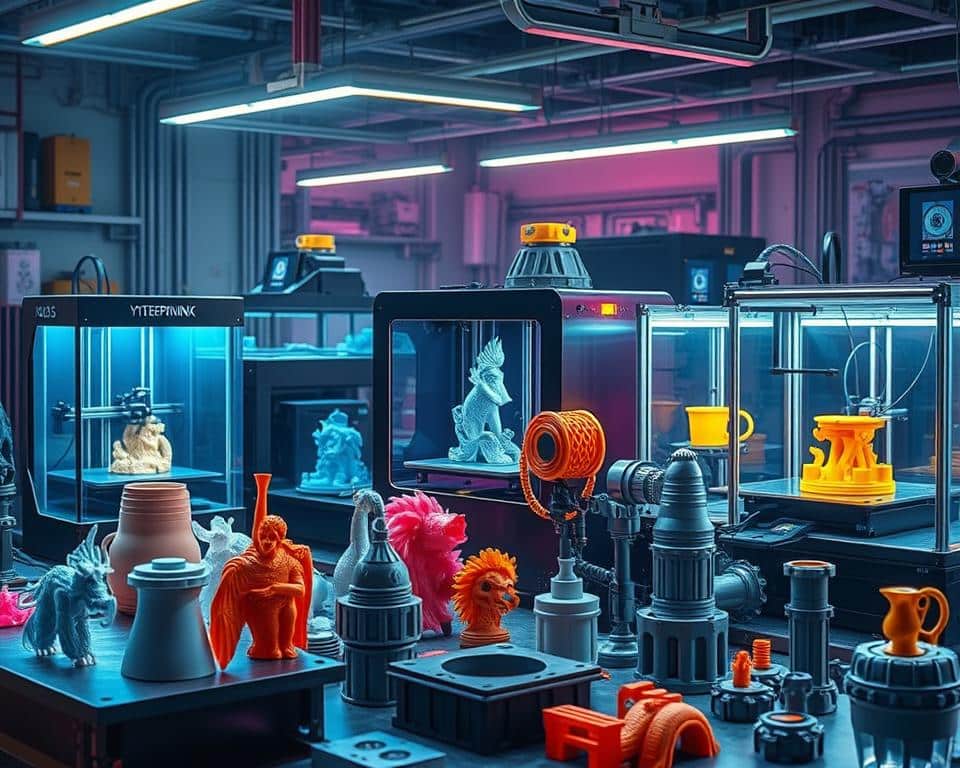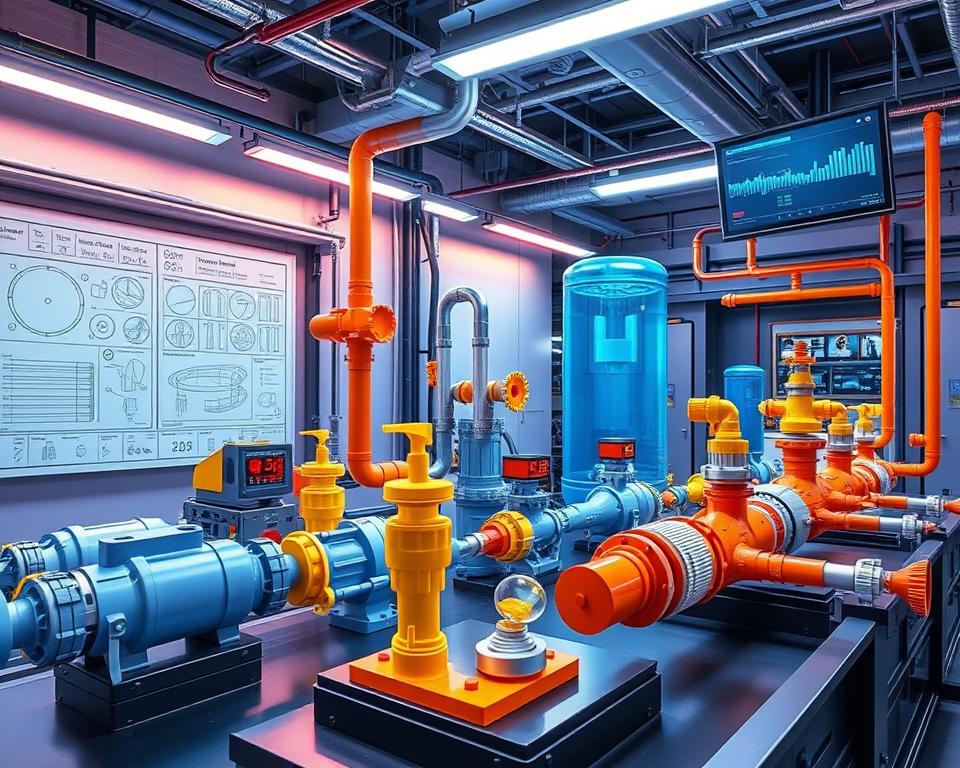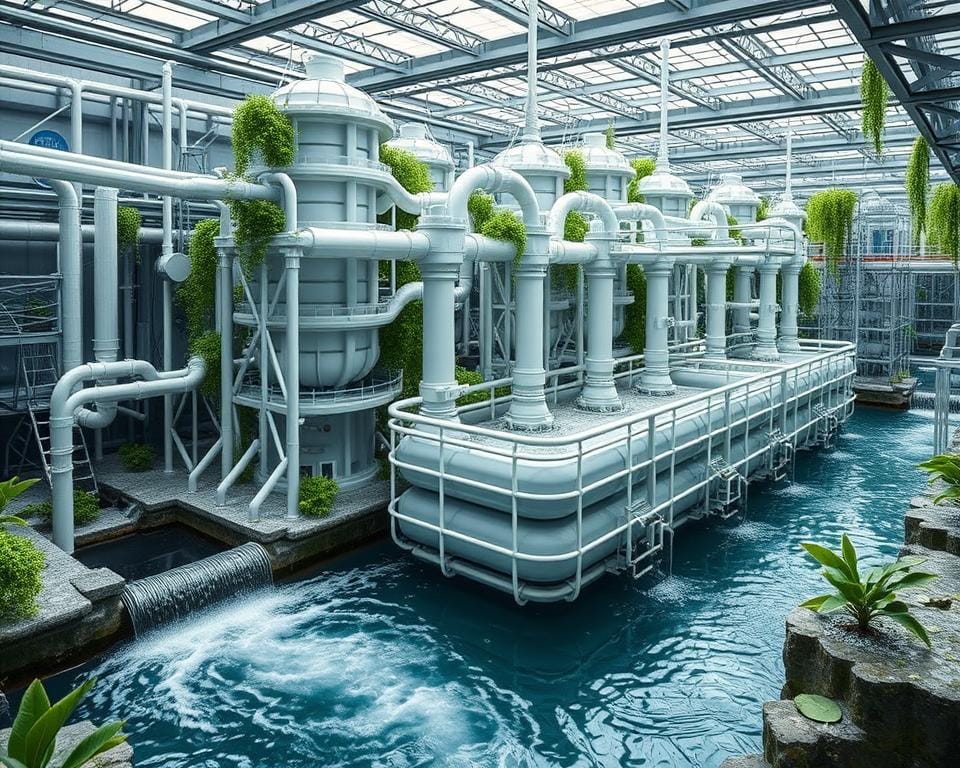The world faces a growing water crisis. Demand is rising, and a big water shortage is expected by 2030. Traditional ways to treat water work but can harm the environment. 3D printing offers a new, cleaner method. It uses less energy and produces fewer bad byproducts.
3D printing can make special filters for cleaning water better than old methods. These filters are cheap, efficient, and better for the planet. This new tech is changing how we manage water. It makes better filters, improves how we remove pollution, and can even take out oil and heavy metals from water.
Studies show that making reverse osmosis (RO) membranes with 3D printing works better now. This makes RO a good technology for cleaning water. Thin Film Composite (TFC) membranes are now even better at selecting ions and letting water through. Thanks to 3D printing, we can now make complex shapes with different materials all at once. This tech is helping the water treatment field grow fast. It’s making our water systems more precise and green.
The Basics of 3D Printing Technology
3D printing is a game-changing manufacturing method that creates objects layer by layer from digital designs. It uses material in a way that lets us make complex shapes easily. This is something hard to do with old manufacturing techniques.
What is 3D Printing?
3D printing started in the 1980s and was first known as Rapid Prototyping (RP). It quickly became a big deal in making things. A Japanese inventor, Dr. Kodama, was the first to try patenting RP technology in 1980. By 1987, the first 3D printer called SLA-1 was on the market. Its simplicity and flexibility have made it popular in many areas.
Types of 3D Printing Methods
There are many ways to do 3D printing, each with its benefits. The most well-known are:
- Selective Laser Sintering (SLS): Carl Deckard, who got a patent in 1987, developed SLS. It uses a laser to bond powder into solid shapes.
- Fused Deposition Modeling (FDM): Invented by Scott Crump in 1989, FDM makes objects by melting plastic and building them layer by layer.
- Digital Light Processing (DLP): DLP cures liquid resin with a special light, which is perfect for making detailed parts quickly.

Other techniques like material extrusion and vat photopolymerization are also important. Each method is unique and fits different project needs. This variety gives people more choices for their specific materials and goals.
Advantages of 3D Printing in Environmental Engineering
3D printing is very useful in environmental engineering. Its main benefits include:
- Precision: SLA and similar technologies can make parts very close to the original design. They can be within 100 μm of what was planned.
- Adaptability: With many materials to choose from, methods like digital light processing can make objects for many uses.
- Minimal Waste: 3D printing is more efficient. It doesn’t waste as much material as old production methods.
- Lower Energy Consumption: It also uses less energy, which helps us make things in a cleaner way.
These perks show why 3D printing is great for making eco-friendly solutions. Using techniques like SLS, FDM, and DLP allows us to build complex, useful parts for environmental projects. For deeper details, check out this resource on digital light processing.
Applications of 3D Printing in Wastewater Treatment
3D printing is changing how we tackle wastewater treatment by making special membranes. These membranes help fight pollution. They have unique shapes, bigger surface areas, and custom pore sizes. This makes them very good at removing contaminants and resisting clogs.
3D Printed Membranes for Pollution Control
At the University of Bath, researchers have created 3D printed devices. These devices can clear out up to 75% of a harmful chemical called PFOA in less than three hours. Their 3D printed ceramic pieces absorbed 67% of PFOA and could hold up to 0.14 mg/L of it. After being heat-treated, these pieces did an even better job, removing 75% of PFOA quickly.
A company named Nano Sun is making a big difference by 3D printing water-filter membranes. These membranes work five times better than old ones. They can filter a large area of water every day, helping industries get rid of water pollution. This shows how 3D printing can greatly improve the way we clean wastewater.
Developments in Membrane Technology
The field of advanced membrane technology is growing fast because of 3D printing. This tech has led to new kinds of membrane spacers, biocarriers, and sorbents. These improvements make water cleaning processes much better. 3D bioprinting lets us make special structures that help microbes grow and break down pollutants better.
Countries like the USA, China, India, the UK, Germany, and Spain are leading in 3D printing research for cleaning water. There’s been a huge increase in studies from 2014 to 2023. This shows a worldwide effort to find better ways to treat wastewater with new technology.
Case Studies and Real-World Examples
3D printed membrane technology is showing great results in the real world. For instance, the Printzyme device removed over 80% of a drug from water in 24 hours. And it got rid of 95% of another drug in just two hours. These results prove how effective 3D printed devices can be in cleaning water.
Furthermore, the Global Alliance on Health and Pollution found more than 5,000 polluted spots in poorer countries in 2023. 3D-printed devices tailor-made for each location are boosting clean-up efforts. These examples demonstrate how 3D printing is making a big difference in solving environmental issues worldwide.
3D Printing in Water Systems: Case Studies and Innovations
3D printing is changing water systems for the better. One breakthrough is using ceramic for cleaner water. 3D printing innovations are at the forefront, led by researchers at the University of Bath. They’ve made lattices that get rid of harmful chemicals in our drinking water, thanks to a special kind of ceramic.
These lattices aren’t just any filters; they’re made with a unique printer and then heated up to work better. Remarkably, they can clean out over 75% of certain chemicals from our water. This is a big deal as countries get stricter about water safety.
Their use is impressive, showing great results in cleaning and collecting fog water with sunlight. Not just that, but they also work well over time. It’s innovation worth noting.

The impact of these 3D printing methods is huge. They allow us to make complex shapes that help clean our water more efficiently. Thanks to these inventions, we could possibly gather more daily freshwater. And with support from governments, these technologies could reach more people, improving our health.
Only a few companies, like WASP, are exploring this niche, but it’s full of possibilities. And there’s also a chance to see new kinds of filters in our water systems soon. This could mean a big leap forward in solving water issues worldwide.
| Parameter | Performance |
|---|---|
| Daily Water Collection | ~5.5 L/m² |
| Water Evaporation Rate | 2.12 kg/m²/h |
| Fog Trapping Rate | 0.45 g/cm²/h |
| PFOA Removal | 75% |
| Sintering Temperature | 500°C |
Recently, research in this area has skyrocketed, especially after 2019. It’s becoming a hot topic in places like China and the USA. 3D printing is now seen as a key player in fighting environmental challenges.
Revolutionizing Watershed Management with 3D Printing
Watershed 3D Printing is changing how we manage watersheds. It gives new tools for studies and restoring habitats. Now, we can make models that are really accurate to learn more about how watersheds work.
Watershed 3D Modeling
This technology lets us study watersheds in detail. We can make 3D models that show the land, water, and plants very well. Using data from the air, satellites, and on the ground, specialists create digital versions of places like Walker Basin.
The end result is a detailed model. This helps us understand a watershed’s details better.
Eco-Resilient Structures for Habitat Restoration
Through 3D printing, we make structures that help restore habitats. Things like artificial reefs and barriers against erosion are made to fit each need. These help water ecosystems and keep the watershed healthy.
With these models, conservationists find problem areas and figure out how to stop soil erosion. They can make plans to lessen bad effects. For more on these tactics, visit explore further.
Designing Sustainable Waterscapes
Watershed 3D printing is also used in designing sustainable landscapes. Designers make features like green roofs and permeable pavements. These not only look good but help manage stormwater and recharge groundwater.
By adding sustainable designs to our cities, we can blend urban life with nature’s water systems. The goal is to keep a healthy balance.
This use of 3D printing in watershed management shows its power in creating sustainable ecosystems. It’s about teaching people the effects they have on watersheds and using eco-friendly structures. Indeed, 3D printing is making a big difference in this field.
Conclusion
The transformative potential of 3D printing in water systems is undeniably clear. This technology revolutionizes water treatment and supports sustainable ecosystems. It addresses global water challenges effectively.
3D printing makes ultrathin membranes for wastewater pollution control. It also creates structures for habitat restoration. The University of Bath found ceramic-infused lattices that remove harmful PFAS, marking progress against environmental impacts.
Advancements in watershed 3D modeling enhance sustainable waterscapes. This technology helps identify vulnerable areas. It supports the implementation of targeted conservation, improving stormwater management and groundwater recharge.
3D printing enhances our water systems with efficiency and sustainability. It offers a path to protect global water ecosystems. Embracing these innovations is crucial for tackling water challenges. For more details, visit this resource.

